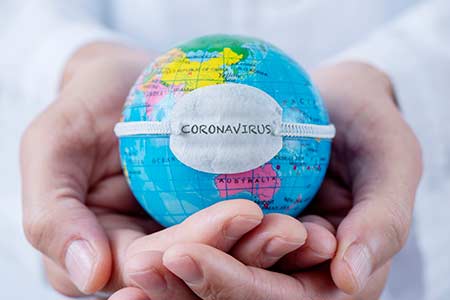The role of vitamin D in the prevention of coronavirus disease 2019
infection and mortality
Petre Cristian Ilie1
· Simina Stefanescu2
· Lee Smith3
Received: 30 March 2020 / Accepted: 15 April 2020 / Published online: 6 May 2020
© Springer Nature Switzerland AG 2020
Abstract
WHO declared SARS-CoV-2 a global pandemic. The present aim was to propose an hypothesis that there is a potential
association between mean levels of vitamin D in various countries with cases and mortality caused by COVID-19. The mean
levels of vitamin D for 20 European countries and morbidity and mortality caused by COVID-19 were acquired. Negative
correlations between mean levels of vitamin D (average 56 mmol/L, STDEV 10.61) in each country and the number of
COVID-19 cases/1 M (mean 295.95, STDEV 298.7, and mortality/1 M (mean 5.96, STDEV 15.13) were observed. Vitamin
D levels are severely low in the aging population especially in Spain, Italy and Switzerland. This is also the most vulnerable
group of the population in relation to COVID-19. It should be advisable to perform dedicated studies about vitamin D levels
in COVID-19 patients with diferent degrees of disease severity.
Keywords COVID-19 · SARS-CoV2 · Vitamin D · Cholecalciferol · Calcitriol
Background/aims
WHO declared COVID-19 caused by the virus SARS-CoV-2
a global pandemic. Little is known about the potential protective factors. In the case of COVID-19 we should delineate
the protective factors in anti-infective agents that might protect against infection and factors that improve the outcome
once the infection has been produced.
Previous observational studies report independent associations between low serum concentration of 25-hydroxyvitanim D and susceptibility to acute respiratory tract
infections [1]. In a systematic review and meta-analysis
of 25 randomised controlled studies, Martineau et al. has
described that vitamin D protected against acute respiratory tract infection overall [2]. In a review of the literature,
regarding the possible role of vitamin D in the prevention
of infuenza virus infection, Gruber-Bzura noticed that the
data generate controversies and doubts [3].
Calcitriol (1,25-dihydroxyvitamin D3) exerts pronounced
impacts on ACE2/Ang(1–7)/MasR axis with enhanced
expression of ACE2 [4]. ACE-2 is the host cell receptor
responsible for mediating infection by SARS-CoV-2. Starting from this, it might suggest a higher risk of infection.
However, this has not been shown to date and previous studies identifed associations between higher levels of ACE2
and better coronavirus disease health outcomes. In the lung,
ACE2 was shown to protect against acute lung injury [5].
We hypothesize that vitamin D may play a protective role
for COVID-19.
The primary aims of this study are to assess if there is
any association between the mean levels of vitamin D in
various countries and the mortality caused by COVID-19.
The secondary aim was to identify if there is any association
between the mean vitamin D levels in various countries and
the number of cases of COVID-19.

